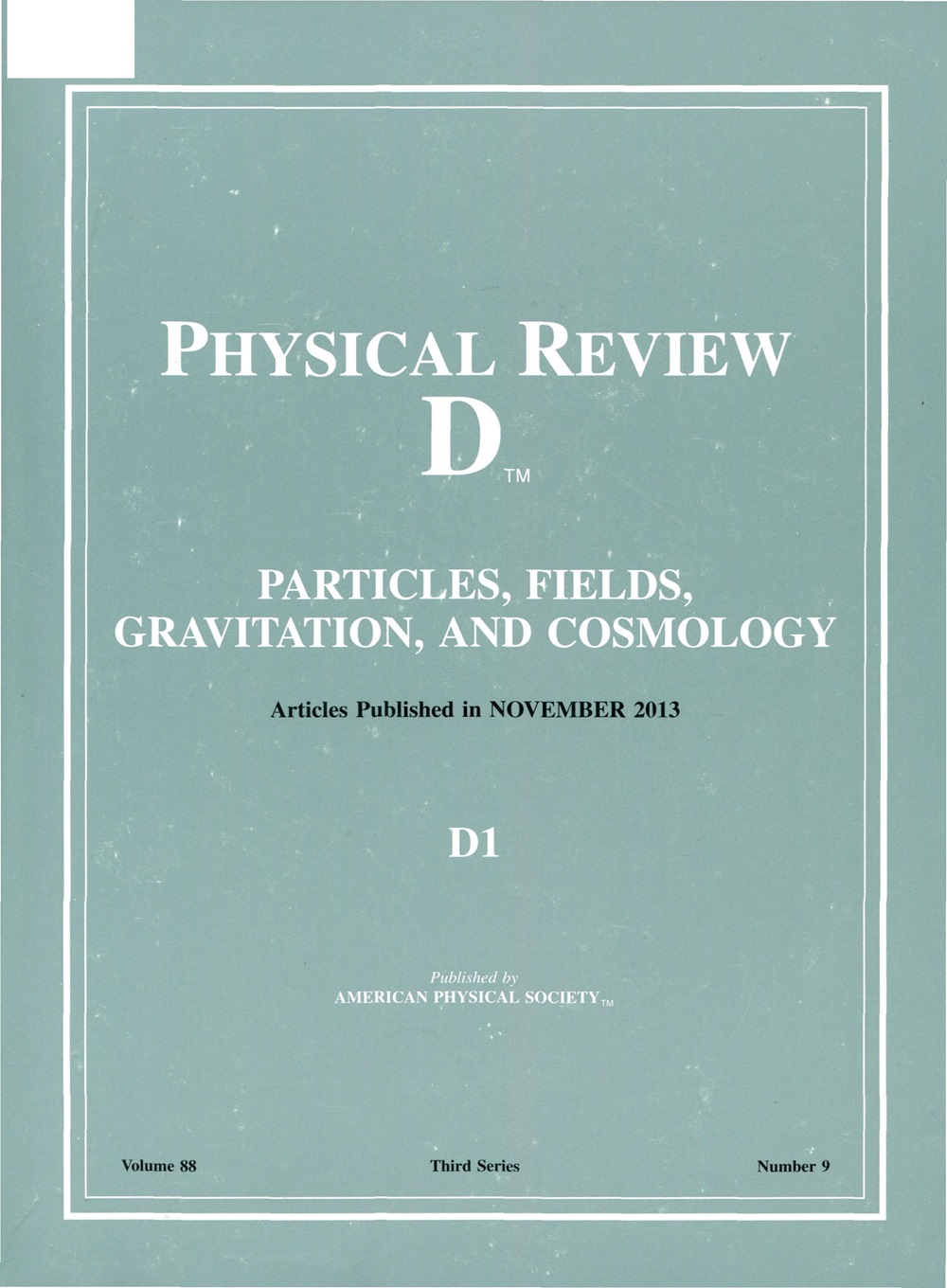自顶向下全息 QCD 的先驱引力形式因子
IF 5
2区 物理与天体物理
Q1 Physics and Astronomy
引用次数: 0
摘要
通过自上而下的全息量子色动力学(QCD)方法,首次计算出了具有动量传递依赖性的粒子引力形式因子(GFFs)。这一点非常重要,因为强子的引力形式因子包含了内部应力分布的信息,可以帮助我们深入了解 QCD 如何形成强子的机制。我们还得到了这个 GFFs 的前向极限值,即 D 项。此外,在这种方法中,我们观察到了所谓的胶球优势(glueball dominance),即小离子通过无限胶球谱产生引力相互作用。本文章由计算机程序翻译,如有差异,请以英文原文为准。
Gravitational form factors of pion from top-down holographic QCD
The gravitational form factors (GFFs) of pions are calculated from a top-down holographic quantum chromodynamics (QCD) approach with momentum transfer dependence for the first time. It is important because the GFFs of hadrons have information on the internal stress distribution that may provide insight into the mechanism of how QCD forms hadrons. The forward limit value of this GFFs, i.e., the D-term, was also obtained. Furthermore, in this approach, we observe the so-called glueball dominance, in which pions have gravitational interactions via infinite glueball spectra.
求助全文
通过发布文献求助,成功后即可免费获取论文全文。
去求助
来源期刊

Physical Review D
物理-天文与天体物理
CiteScore
9.20
自引率
36.00%
发文量
0
审稿时长
2 months
期刊介绍:
Physical Review D (PRD) is a leading journal in elementary particle physics, field theory, gravitation, and cosmology and is one of the top-cited journals in high-energy physics.
PRD covers experimental and theoretical results in all aspects of particle physics, field theory, gravitation and cosmology, including:
Particle physics experiments,
Electroweak interactions,
Strong interactions,
Lattice field theories, lattice QCD,
Beyond the standard model physics,
Phenomenological aspects of field theory, general methods,
Gravity, cosmology, cosmic rays,
Astrophysics and astroparticle physics,
General relativity,
Formal aspects of field theory, field theory in curved space,
String theory, quantum gravity, gauge/gravity duality.
 求助内容:
求助内容: 应助结果提醒方式:
应助结果提醒方式:


